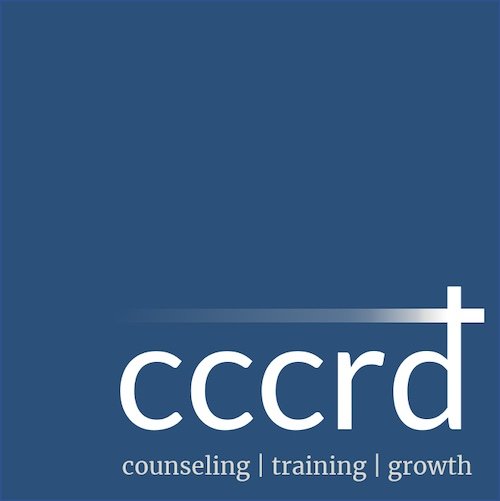Trauma: No Drama
In the first part of her series on understanding trauma, Kimberly Fritsch, LAC addresses some misconceptions and shows how trauma is so much more than being “dramatic.”
Trauma is real, heart-wrenching, and complex.
As people, we’re inclined to withhold the broken parts of ourselves out of fear, humiliation, guilt, rejection, and shame. After all, censoring ourselves feels safe, and trauma is ugly and messy.
If trauma means “wound,” then shouldn’t we be friends with brokenness in order to help it heal? We’re all broken. And when our culture tells us to hide, God tells us to rise. Trauma talk is essential and healthy when we recognize that God calls us to talk about unpleasantries and suffering for the purpose of seeing it be redeemed.
The clinical history of trauma
Although trauma isn’t a mental illness, numerous clinicians choose to focus on posttraumatic stress disorder (PTSD). PTSD became acknowledged following the Vietnam War after numerous research studies were conducted on veterans. From this time on, trauma and PTSD were examined and treated as their own condition with unique characteristics.
While the US Department of Veterans Affairs estimated that about 30% of Vietnam War veterans developed PTSD at some point in their lives, the general population statistics are much smaller. Fewer than 8% of Americans are estimated to develop PTSD. Vulnerability risks for experiencing PTSD increase following a traumatic event with the severity of the trauma, history of abuse and mental illness, along with a lack of a social support system. As we will see later, trauma shows up both in big and small ways, ranging from severe PTSD to difficulty adjusting to life’s changes.
Addressing misconceptions
We all have views of trauma, but there are certain misconceptions about it that can be damaging and disempowering to trauma sufferers.
Here are three of the biggest misconceptions:
1. There’s only “big” trauma.
This misconception says that only big events, such as a loved one having cancer, sexual and physical abuse, a severe car accident, human trafficking, surviving a devastating natural catastrophe, terrorist attacks like 9/11, wars, and famines are all that count as trauma.
While these traumatic events are life-threatening, trauma can come in all sizes: large and small. Going through a divorce or grieving the death of a loved one can present traumatic hardships too where life adjustments, such as money, security, a sense of belonging, and self-worth all come to a head. This, too, can be traumatic.
2. “Stop it. It’s all in your head.”
Trauma isn’t the average physical cut you may get on your arm that naturally heals in a few days. Psychological scarring wreaks havoc and runs deep through the veins of trauma sufferers.
Building self-awareness and acknowledging that trauma is a reality should begin with ourselves. Taking an insensitive or dismissive stance—even when unintentional or with seemingly good intentions—only leads to the minimization of the devastating effects of trauma. Invalidating a person’s identity and self-worth further opens the wounds of trauma. Trauma sufferers need love, empathy, and acceptance rooted in trust to be truly seen. They don’t need to hear that they’re being dramatic.
If someone you care about were to come to you at this very moment and tell you he/she has been victimized by trauma, what would you do? Would you respond or react? Could you exercise patience? Would you listen or would the shock propel you to flee? Wrestling with questions like these is a must when it comes to our personal response to tragedies, suffering, and loving people well. Above all, how would Jesus ask you to respond?
3. Equating normal daily struggles with trauma
Living in an unknown world that we cannot control and feeling stress itself are normal aspects of human existence. However, technological advances of googling information in a matter of seconds and social media platforms tell us otherwise. “I’m traumatized” is now being loosely used, especially amongst young people.
This statement and those like it can be misleading, confusing, and even offensive to true trauma sufferers. Challenges like getting a poor grade on an exam, missing a doctor’s appointment, or being twenty minutes late to an important meeting due to traffic are daily obstacles. These events can bring sadness, anxiety, frustration, or anger, and while these human nature emotions can feel intense, they’ll gradually dissipate with time where a sense of normalcy returns. This experience is different than that of trauma.
Furthermore, developmental stages occur throughout the lifespan that can cause periods of stress. The developmental life stage that experiences the most transitions is adolescence. For this age group and even young adults, significant changes that involve life-altering decisions, such as career choice, selecting higher education versus entering the workforce, and so on can cause a great deal of anxiety and pressure. However, the uneasiness and negative emotions that these life trials present will subside on their own as well. A sense of calm is typically restored once young individuals begin to take steps and engage in decision-making to direct the life paths they desire to have. As intense as this may sound, we need to differentiate this life adjustment from “true” trauma.
Trauma, compared to common human struggling, lingers in the long term, leaving people feeling paralyzed and disempowered. Trauma’s devastating effects can feel permanent and inescapable. When trapped in this state, trauma can lead to despair. Trauma and the added stress of having to cope with daily responsibilities and obstacles can feel insurmountable.
Working to heal trauma
Because of its severity, it may sound like trauma cannot be cured. However, clinical psychologist Peter A. Levine, says it best: “The paradox of trauma is that it has both the power to destroy and the power to transform and resurrect.” Although trauma tries to rob individuals’ souls and drag them down into darkness, redemption and daylight are on the horizon. Our role as counselors is to engage in the slow and patient work of understanding trauma and helping trauma sufferers on the road toward healing.

